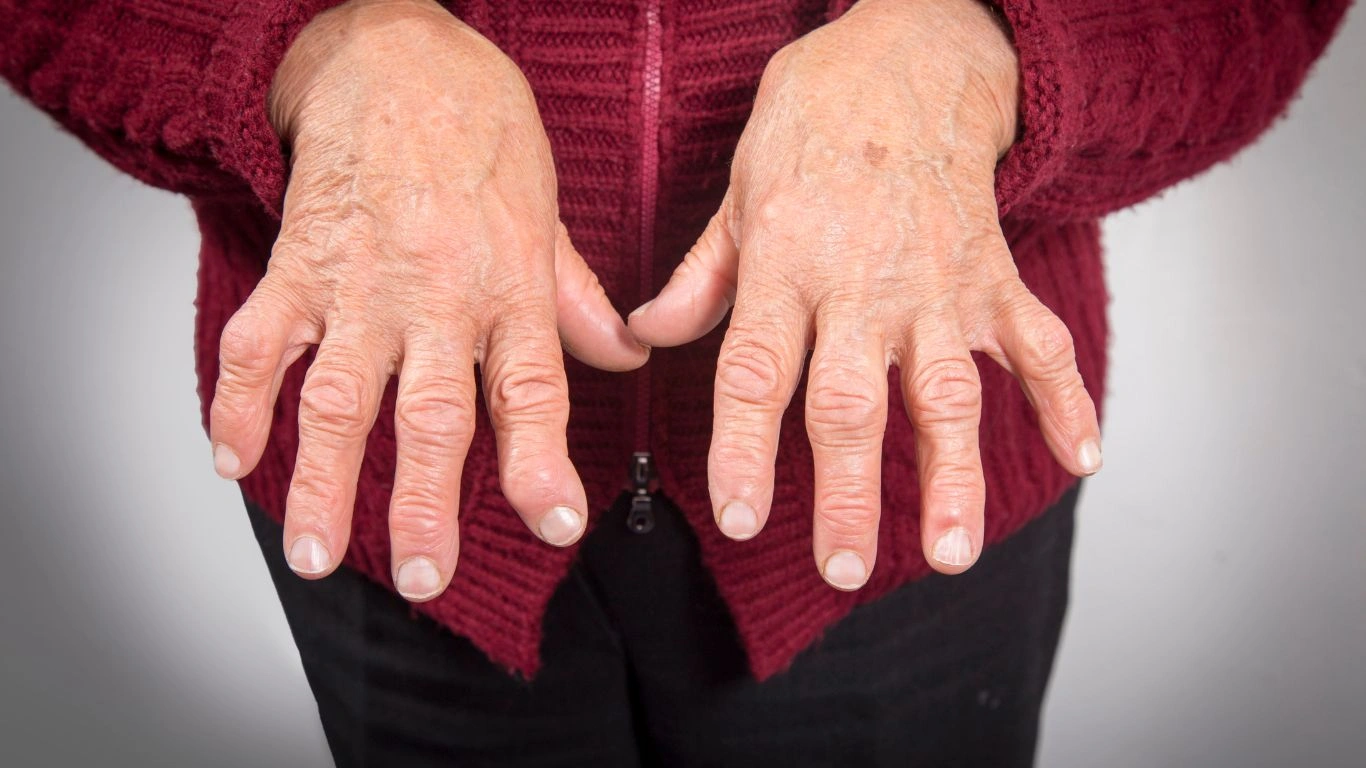Effective Strategies for Rheumatoid Arthritis and Balancing Inflammation Triggers
As a rheumatology nurse practitioner, I’ve had countless conversations with patients about what really makes rheumatoid arthritis flare—and what actually helps calm it down. Let’s be real: managing rheumatoid arthritis and balancing inflammation triggers is a bit like walking a tightrope. You try to stay steady, but the smallest gust (say, a stressful week or a sneaky ingredient in your lunch) can knock things off balance. I’ve seen it firsthand in clinic—patients doing all the “right” things, yet still feeling like their joints are at war. The truth is, it’s not just about medication. It’s also about lifestyle choices, food triggers, stress levels, sleep, and even your daily routine. Yep, RA is personal, and managing it takes a 360-degree view.
What Actually Triggers Inflammation in RA?

If you live with RA, you probably already know that not all flare-ups are the same. Some feel like a dull ache, while others hit like a freight train. And while no two people are the same, there are some common culprits that keep popping up in my exam room.
1. Stress – The Silent (but Loud) Trigger
When a patient tells me they’ve been under a lot of stress, I don’t even have to ask—they’re usually already flaring. Our stress response system, aka the fight-or-flight mode, pumps out cortisol and adrenaline. Sounds helpful, right? Not so much. Over time, chronic stress throws off the immune system, which for people with autoimmune conditions, is already a bit… confused. I always recommend my patients build in a few daily de-stress rituals—whether it’s a quick walk, deep breathing, or simply saying “no” to something that doesn’t serve them.
2. Food Sensitivities and the Inflammation Connection
Food is a big one. And I mean big. I’ve had patients feel like new people just by identifying and avoiding their trigger foods. While we’re still learning about the exact mechanisms, certain foods seem to ignite that inflammatory fire. Some of the usual suspects include:
- Processed foods and refined carbs
- Excess sugar (sodas, sweet snacks)
- Nightshade vegetables like tomatoes and eggplants (though this isn’t true for everyone)
- Gluten and dairy for some people
I often suggest keeping a food and symptom diary. It doesn’t have to be complicated—just jot down what you eat and how you feel. Patterns tend to emerge pretty quickly.
Balancing Inflammation Triggers with Smart Lifestyle Moves

Here’s where we shift gears a bit. It’s not all about avoiding bad stuff—it’s also about adding in the good stuff. The body’s natural inflammatory response can be redirected, balanced, and calmed through small but powerful lifestyle tweaks. I’ve watched patients turn their entire disease trajectory around with some of these tools. Not overnight—but definitely over time.
1. Movement (Even When You Don’t Feel Like It)
This one’s tough, I know. When your joints hurt, exercise is the last thing on your to-do list. But gentle movement actually lubricates joints and helps reduce stiffness. I recommend low-impact activities like:
- Swimming or water aerobics
- Stretching or yoga (modified for joint sensitivity)
- Short daily walks—just 10 minutes can help
It doesn’t have to be intense or Instagram-worthy. Just get moving in a way that feels right for your body.
2. Anti-Inflammatory Foods That Actually Work
On the flip side of food triggers, there are foods that fight inflammation like champs. I’ve seen the Mediterranean-style diet work wonders—not just in studies but in real patient lives. Here are a few staples I encourage:
- Fatty fish like salmon or mackerel (loaded with omega-3s)
- Leafy greens like spinach and kale
- Turmeric (golden milk lattes, anyone?)
- Berries and cherries for their antioxidant power
- Olive oil over butter or processed oils
When patients start swapping out pro-inflammatory foods for these anti-inflammatory powerhouses, their energy improves, pain reduces, and yes—flares become less frequent. It’s like giving the immune system a calming cup of tea instead of a shot of espresso.
Sleep, Hormones & The Hidden Inflammation Cycle

Let’s not ignore the sneaky behind-the-scenes players: sleep and hormones. You can eat all the kale you want, but if you’re not sleeping well, your inflammation can still run wild. Sleep is when your body repairs—and for people with RA, that downtime is sacred. Lack of sleep ramps up inflammatory markers and throws off hormonal balance, which can exacerbate symptoms.
Hormonal shifts—especially during perimenopause or menopause—also change the game. I’ve seen many women experience their first RA symptoms or worsening of their disease during these transitions. That’s not a coincidence. Estrogen plays a role in immune modulation, and when it drops, symptoms can spike. This is where working closely with a rheumatology provider who understands the full picture (including hormone changes) really makes a difference.
Gut Health and Rheumatoid Arthritis: More Connected Than You Think

Here’s something I wish more patients knew early on: your gut health has a huge role in how your immune system behaves. I’ve had patients come in, frustrated that nothing is helping their RA flares, and after we explore gut-related triggers—boom—things start shifting. Your gut is where a large part of your immune system lives. If your gut is inflamed, you better believe your joints will get involved too.
In practice, I’ve seen this connection show up in people who have:
- Long-term digestive issues like bloating, IBS, or chronic constipation
- Frequent antibiotic use in the past
- Processed, low-fiber diets
We often work together to improve their gut terrain—adding in more fiber, fermented foods like sauerkraut or kefir, and sometimes a high-quality probiotic. And no, not all probiotics are the same, so I recommend choosing one that’s strain-specific and tailored to immune health (Lactobacillus rhamnosus and Bifidobacterium lactis are two I’ve seen help).
Personalizing Your Inflammation Plan

There’s no “one-size-fits-all” when it comes to balancing rheumatoid arthritis and inflammation triggers. What works for one person might not do much for another—and honestly, that’s why I love what I do. It’s about digging into someone’s unique life, health history, stress patterns, food preferences, and even family dynamics to build something that truly fits them. It’s detective work and healing rolled into one.
One of my patients—let’s call her Jess—used to flare up every few weeks, despite taking her DMARDs religiously. We dug a little deeper and found that she wasn’t sleeping more than 4-5 hours a night, skipping meals, and relying heavily on coffee to power through the day. Once we started shifting those daily rhythms, her flares dropped significantly. Not gone entirely—but the improvement was so noticeable that she called it “life-changing.” That’s the power of personalization.
Here’s how I usually help patients build their custom anti-inflammatory roadmap:
- Track triggers. Use a simple notebook or app to log symptoms, food, sleep, and stress levels.
- Identify patterns. Does joint pain spike after certain meals? Or after tough emotional days?
- Adjust slowly. Swap one food at a time or try adding a short evening wind-down routine. Don’t overhaul everything at once—it’s overwhelming.
- Check labs. Inflammation markers like CRP, ESR, and even Vitamin D can give clues. I love working alongside functional lab testing to get a bigger picture.
When patients are involved in their own care—when they see how these pieces connect—it’s empowering. They start to trust their body instead of fearing it.
Supplements and Natural Supports (That Aren’t Just Hype)

Supplements can be a gray area, right? So many ads, so many promises, and not enough regulation. But there are a few that I consistently recommend, based on both clinical experience and the growing body of evidence. Just remember—it’s never about replacing meds without supervision. It’s about supporting the body alongside your treatment plan.
My go-to anti-inflammatory supplements for RA:
- Omega-3 fatty acids (from fish oil): These are inflammation busters. Look for ones with high EPA/DHA content and third-party testing for purity.
- Curcumin (from turmeric): Best in a form that includes black pepper extract (piperine) for better absorption. Great for joint stiffness.
- Magnesium: Helps with muscle tension, sleep, and stress regulation.
- Vitamin D: So many of my RA patients are deficient, and low levels are tied to worse inflammation.
I always tell patients to run these by their rheumatologist or primary care provider, especially if they’re on immunosuppressants. Even “natural” things can interact with meds.
The Power of Patient Education and Community Support
One thing I’ve noticed over the years is how much stronger patients feel when they’re informed and not going through this alone. Whether it’s joining a Facebook support group, a community yoga class for arthritis, or just chatting with others who get it—it makes a difference. I’ve seen patients light up when they realize they’re not the only ones navigating this rollercoaster.
As a nurse practitioner, I see my role as part-guide, part-educator, part-cheerleader. It’s not just about adjusting meds—it’s about empowering people to make everyday choices that stack up over time. That’s how inflammation gets dialed down. That’s how we find balance—even with RA in the mix.
Mind-Body Connection: How Mental Health Influences RA Inflammation

Something I can’t stress enough from my years working with RA patients is how tightly connected your mental and emotional health is to inflammation levels. It’s not just “in your head.” Chronic stress, anxiety, and depression literally fuel the inflammatory fire inside your joints. When patients open up about feeling overwhelmed or burnt out, I know it’s time to explore coping tools that go beyond meds.
One of my favorite success stories involves a patient, Mark, who struggled with both RA and untreated anxiety. His joint pain was severe, but once we incorporated mindfulness practices, cognitive behavioral therapy, and gentle movement, his inflammatory markers dropped and he reported feeling less “trapped” by his disease. It’s proof that managing RA is a whole-person journey.
Simple Mind-Body Practices to Try
- Mindfulness meditation: Just 5-10 minutes daily can help reset your nervous system.
- Guided imagery: Visualizing calm, pain-free joints can sometimes reduce discomfort.
- Progressive muscle relaxation: Helps ease physical tension that can worsen pain.
- Journaling: Writing about your feelings can reduce stress and improve mood.
In clinic, I always encourage patients to experiment and find what fits their style—no one method works for everyone. The key is consistency, even on tough days.
Working with Your Healthcare Team: A Partnership, Not a Dictatorship

One thing I’ve learned after years in rheumatology is that the best outcomes happen when patients feel like partners, not just recipients of care. If you’re managing rheumatoid arthritis, it’s crucial to build a healthcare team you trust and can openly communicate with. This includes rheumatologists, nurse practitioners, physical therapists, nutritionists, and even mental health professionals.
In my practice, I focus on education—helping patients understand why certain medications are prescribed, what lifestyle changes truly impact inflammation, and how to spot early signs of a flare. When patients understand their disease, they feel more in control. And that control can actually reduce stress, which, you guessed it, helps keep inflammation balanced.
Tips for Effective Healthcare Collaboration
- Come prepared: Keep a symptom diary and list of questions before appointments.
- Be honest: Share your concerns about side effects, lifestyle challenges, or mental health.
- Advocate for yourself: Don’t hesitate to ask for referrals or second opinions if needed.
- Follow-up regularly: RA is dynamic, so frequent check-ins help fine-tune treatment.
Remember, managing rheumatoid arthritis and balancing inflammation triggers isn’t a solo journey. It’s a team sport where you are the MVP.
Final Thoughts: Small Changes, Big Impact
Throughout my career, I’ve witnessed countless patients transform their lives by addressing the full spectrum of inflammation triggers—from what they eat and how they move, to how they manage stress and sleep. It’s not about perfect adherence or a quick fix. It’s about small, sustainable steps that build resilience over time.
Balancing rheumatoid arthritis is a marathon, not a sprint. So be kind to yourself, celebrate progress no matter how small, and remember you’re not alone in this. Together, with the right information, support, and a tailored plan, it’s possible to live well with RA.
References
- https://www.rheumatology.org/
- https://www.arthritis.org/
- https://www.gastro.org/
- https://www.nccih.nih.gov/
Disclaimer
This article is intended for informational purposes only and should not replace professional medical advice, diagnosis, or treatment. Always consult your healthcare provider regarding any questions about your health or treatment plan, especially before making any changes to medications or lifestyle.

Tarra Nugroho is a dedicated Nurse Practitioner with a strong foundation in family and preventive care. She brings both compassion and clinical expertise to her practice, focusing on patient-centered care and health education. As a contributor to Healthusias.com, Tarra translates medical knowledge into clear, empowering articles on topics like women’s health, chronic disease management, and lifestyle medicine. Her mission is simple: help people feel seen, heard, and informed—both in the clinic and through the content she creates. When she’s not caring for patients, Tarra enjoys weekend hikes, plant-based cooking, and curling up with a good health podcast.






